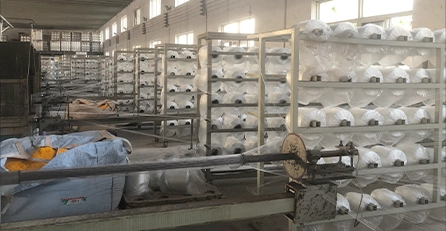vacuum hose
Understanding Vacuum Hoses Essential Components for Optimal Performance
Vacuum hoses are vital components in many industries and applications, serving a range of functions from transporting materials to ensuring the efficient operation of various machines. Understanding their design, function, and maintenance can significantly improve the performance of equipment and systems relying on vacuum technology.
At its core, a vacuum hose is a flexible tube that transports air or other gases from one point to another in a vacuum system. This is crucial for creating and maintaining a vacuum environment, which is necessary for processes such as packaging, lifting, and even in scientific applications like electron microscopes. The materials used to manufacture these hoses are usually chosen based on the specific application, as they must withstand various pressures and temperatures while maintaining flexibility.
The most common materials for vacuum hoses include rubber, silicone, and thermoplastics. Rubber hoses are often favored for their durability and resistance to wear, while silicone hoses are preferred for high-temperature applications. Thermoplastic hoses offer versatility, as they can be engineered to possess specific properties, including flexibility and chemical resistance.
vacuum hose

Proper installation of vacuum hoses is crucial for ensuring optimal performance. Leaks can occur if hoses are improperly connected or if they have been damaged. Therefore, it is essential to regularly inspect hoses for any signs of wear and tear, such as cracks or kinks, and to replace them as necessary. A well-maintained vacuum hose can enhance performance by minimizing air leaks, which directly affects the efficiency of the vacuum system.
Moreover, the size and diameter of the vacuum hose should be compatible with the vacuum pump and the system in use. A hose that is too small can restrict airflow and reduce suction power, while one that is too large may lead to loss of vacuum. Therefore, selecting the right size is critical for maintaining the desired vacuum level.
In industrial settings, many operations rely heavily on vacuum hoses, from food packaging lines to dust collection systems in woodworking factories. Their ability to efficiently move materials and maintain clean environments is invaluable. In laboratories, vacuum hoses are essential for experiments that require controlled atmospheres, thus making them an indispensable part of scientific research.
In conclusion, vacuum hoses are not just simple tubes; they are crucial components that play a significant role in the efficiency and effectiveness of many systems. Understanding their properties, proper maintenance, and installation can lead to improved performance and reliability in various applications. As technology advances, we can expect to see even more specialized hose designs that cater to the evolving needs of different industries.
-
Top Quality Oxy Acetylene Hoses for Sale Fit for Welding DemandsNewsJul.28,2025
-
The Future of Pneumatic Air Tubes in IndustryNewsJul.28,2025
-
Superior and Reliable LPG Hose Pipe Solutions for Every NeedNewsJul.28,2025
-
Exceptionally Durable and Versatile Premium Braided PVC TubingNewsJul.28,2025
-
Best Adapters for Connecting Garden Hose to PVC Pipe ConnectionsNewsJul.28,2025
-
The Essential Role of LPG Hoses in Safe and Efficient Gas DistributionNewsJul.16,2025














